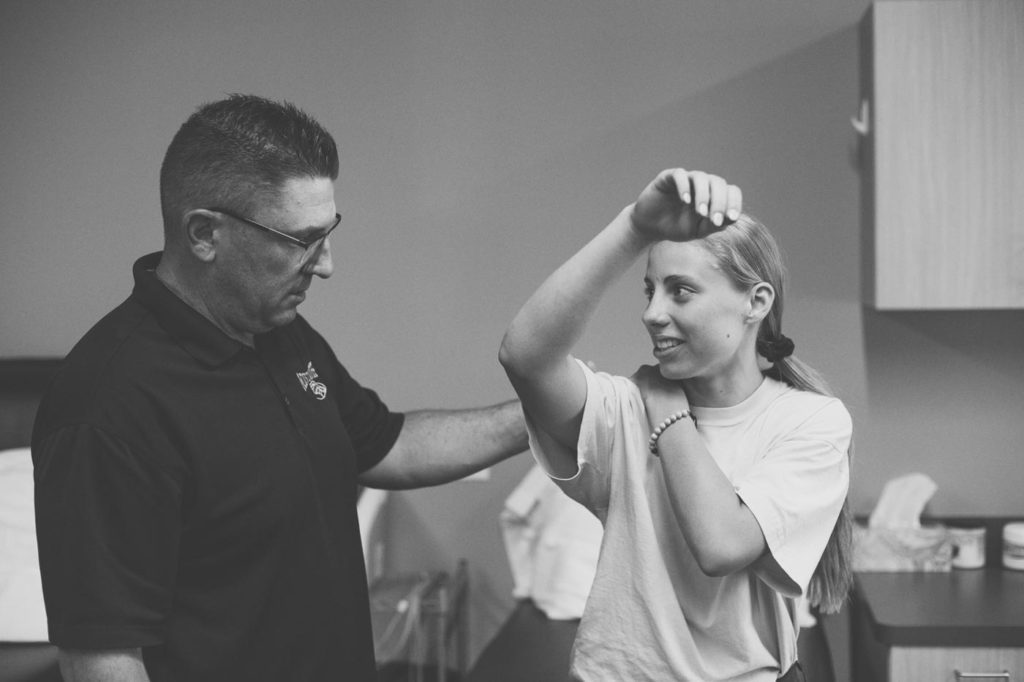When it comes to video production, there are a number of angles worth considering – and I’m not talking about literal vantage points here. In other words, there’s more ways to leverage videography than you might think. In today’s digital world, a majority of business owners publish media that’s geared towards selling a product or service. They don’t exactly think of the entire sales cycle. So today, I wanted to talk about the types of video content you can use to promote your brand and better engage your ideal customers.
While you most certainly don’t have to invest in each, all will give you a better idea on how to take your business to the next level. At the end of the day, consumers (who are people) want to see and hear from people. They don’t want to listen to bots or a radio announcer tell them what to do. They want to feel your brand aura – and they ought to. It’s their hard-earned dollars we’re talking about here. When coupled together in a seamless way, each of these features can really enhance value perception.
At PreFocus, I’m not in the business of helping companies improves sales pitches. I’m genuinely passionate about the authenticity of your brand. Keep this in mind as we roll through. Hopefully, you’re even able to come away with a couple of ideas.
1. About Us Videography.
This type of video production is pretty straight forward. Anyone creating a website or some form on online presence ought to be looking to promote the mission, vision and values of the company. While you can type all of this out, it will always be received a lot better when it’s communicated by the face of the brand. Who you are, what you do, how you do it and why you’re invested is absolutely crucial when it comes to loyalty. This kind of footage details your origin story, purpose, and inevitably where you plan on going.
Depending on the extent of your offering, this could be short and sweet or extremely long. At the end of the day, this is totally up to you. But your ability to extract and spread out the video content will make a big difference. What I’m trying to say is, don’t try to cram too much into one feature. If you’ve got a lot to say, present and overview and segment the details in later videos.
If you’re manufacturing a product, talk about the specifics of your ideation. What problem are you looking to solve and why? If you’re delivering a service, you better be able to stand out. What makes you unique and why would people appreciate it? No matter the root of your business, you have to be able to encompass the experience. Out of all the types of video content on this list, the way you present yourself starts here. So take it seriously.
2. How-It-Works or Explainers.
This type of videography is becoming more and more popular every year. People want to know how to do things themselves. Sure, you can write out the instructions or explain how to use something in a – but nothing beats a visual example. To me, watching an online video about drivetrain mechanics is a lot more understandable than sifting through a manual for my 1992 Chevy. Taking the time to invest in some quick pointers or detailed tutorial can go a long way for any business – even if you’re a service company looking to explain an app.
3. Customer Video Testimonials.
If you really take the time to truly analyze this type of media, it might shock you. Although you may have thousands of reviews on Google or Amazon, a couple dozen video testimonials is usually far more appealing. These days, you just never know who Dave M, Suzy B, and Geoff R might be. If you’re not catching my drift, I’m talking about pictureless, hand-written reviews that could’ve been bought or left by someone’s mom. People don’t know who or what they can trust anymore.
Data and “leverage” is sold all over the place in 2023. An ability to see someone, look them up and confirm they were actually a customer carries a lot of weight. While it may seem like overkill to invest a few hundred dollars to grill your customers about their experience – let me be the first to tell you, it’s not! If you’re afraid to ask satisfied customers why they appreciate you, then how are you even in business? Did your grandpa hand over the company to you or something?
If you take the time to ask, you’ll find that most people will be more than eager to help you out. It actually ends up making them feel even more special. Quality companies usually grow through word of mouth anyways – so you might as well capture some footage to share yourself! Out of all the types of video content to choose from, testimonials are normally the most rewarding.
4. Brand Culture Video Insight.
No matter what any videographer is filming, the culture should always be the focal point. Finding a way to showcase the personality or identity of the business is important – at least it is to me. Nonetheless, there are plenty of ways to go about capturing this in a stand alone video production. A swift pass through from a number of angles to encompass the architecture, design, layout, amenities and people is usually enough to do the trick. Videos that provide insight on the culture don’t always require a lot of talking.
The reel can be fun, serious, insight or personable. Either way, the atmosphere speaks for itself. If you are looking to produce something with more of a featured spotlight, then it’s never a bad idea to include a voiceover. Sometimes, simple conversations with employees, leaders or founders can really brings out the essence of the culture. In contrast to the about video and others that I’ll mention below, verbal insight needs to stick to primary promise and aura of the brand.
5. Thank You Videos.
Out of all the types of video content examples, this is by far the easiest to produce. Whether you’re thanking someone for subscribing, submitting a form, donating money or supporting you in any way – and personal thank you video goes a long way. Think of it like a hand written card. It makes people feel a lot more special than a generic form of appreciation. Every business owner has 5-10 minutes to sit down and record and thank you.
These can be posted on stand alone pages that are redirected after some sort of conversion (on or off site). Welcoming a subscriber or first time customer with a personal video is just as effective. You’re taking the time to actually tell someone that you appreciate their attention or business.
6. Event or Occasions Footage.
Many businesses don’t even consider promoting what they do behind closed doors. While some have good reason, others don’t. Any way you can encompass the actualities of your company, do it! Are you hosting an awards banquet, charity event, company outing or even an in-house brainstorm? Capturing it and sharing bits and pieces on social media (or writing a blog about it) only increases your chances of getting in front of your customers.
Most any form of authentic content is extremely valuable. It also gives you an opportunity to let your hair down a little bit outside of the office or workspace. Although it may seem like a bit much, try me. Any short video is a qualitative approach with quantitative measures – even if you’re shooting from the sky.
7. Updates or Announcements.
Some types of video content may seem unnecessary, but updates or company announcements shouldn’t be viewed that way. Whether you’re making internal or external changes to the business, some form of communication is essential. Not everyone will get that email or make the meeting. Having a process that allows you to broadcast changes, big plans or exciting news is invaluable. While not every business has a premier video studio, it doesn’t take much to ensure people (in general) are in the know and on the same page.
I personally like the way the Desoto County Chamber of Commerce handles their weekly updates. The gal uses a little microphone and keeps things under one minute. Good stuff, easy production.
8. Educational Videography.
If you have a website and any type of social media presence, you’re more than likely already invested in some form of educational content. It’s not too difficult to find a topic that the general public wants to learn more about. The problem is, writing a blog just isn’t as effective as showing someone speak on their knowledge. Even when business owners or key employees are unable to teach something, an expert can always join in on the conversation. This is called affiliate marketing.
Think of it as a guest posts. Relevant topics that are discussed openly create a lot of intrigue. When you’re able to show consumers that you care about providing accurate and detailed learning, they tend to trust you more. It’s just another way to get in front of people and show who you are as a person – instead of typing things out behind a screen ( like I am right now). Out of all the types of video content to choose from, finding a way to teach people your knowledge is a gamechanger.
9 . Informative Videography.
Unlike educational content, an informative approach has more to do with the specific knowledge and experience of people within the culture. Think of it this way: instead of teaching, you’re invested in learning. This is where interviews with team members, management staff, directors, leadership (in general) and even partners comes in handy. Speaking on the industry, different trends and how ideal customers can improve their lives or better use their products and services is a good way to build trust.
Many companies do this by hosting a video blog or podcast. When an array of topics or subjects are tossed around, a ton of information is processed and shared. You can host special guests to attract more viewers or venture out of the office for random conversations with the general public. Participating in stuff like this often creates an endless supply of original ideas for blogs or social media posts.
10. Interview Videography Sessions.
Even though I’ve mentioned this a few times already, a true interview is a lot different than sporadic, question-and-answer sessions. In reality, this can be one of the more complex types of video content to produce. In most cases, you’re going to want to have questions planned out ahead of time – and even approved. In my opinion, the best interviews are always off-the-cuff; but they are very uncommon for major business. They just don’t like the vulnerability.
Nonetheless, interviewing every level of an organization and its customers is a great way to curate some quality, unique content. If you can avoid approaching it like a media session, any form of authentic conversation can really generate some buzz online. Although some look for a reason to hate, most people want to hear what a business and its people have to say. Keeping things simple, relevant and safe can make for an intriguing production.
11. TV Commercials or Video Ads.
Advertising is the last of my types of video content worth mentioning. In 2023, you cannot discuss the sales cycle without media drive sales pitches. I mean, they’re everywhere. I won’t go into too much detail on this here, but a lot goes into this form of production. Not only do you have to consider the neurological insight required, but also perception and remembrance. Many ads are focused on repetition or humor, but the best are always rooted in quality an value.
With that said, be purposeful with everything you do guys – and always remember to Prefocus!










